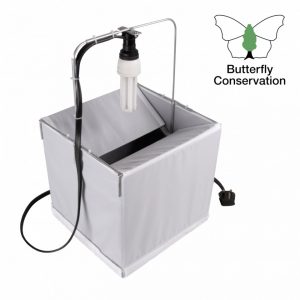
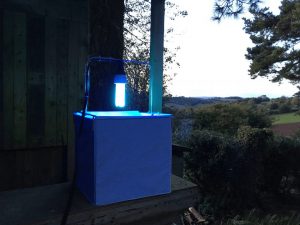
This moth trap is the first to be designed by and built at NHBS. It is built on the Skinner trap principle of a bulb suspended above a box, with sloping flaps descending from two sides to funnel moths into the body of the trap. The trap is very lightweight and portable and has been tested and approved by Butterfly Conservation. One unique feature of this trap is that it is clad entirely in white nylon material which amplifies the light level emitted from the single 20W blacklight bulb included in the kit. The trap electrics are supported by a stainless steel frame that is attached to the container walls, and the trap comes with a 4.5m power lead with a standard UK plug. When fully assembled the trap measures approximately 30cm wide x 30cm deep x 50cm tall and weighs around 2kg; much lighter than the typical solid plastic assemblies of other Skinner traps.
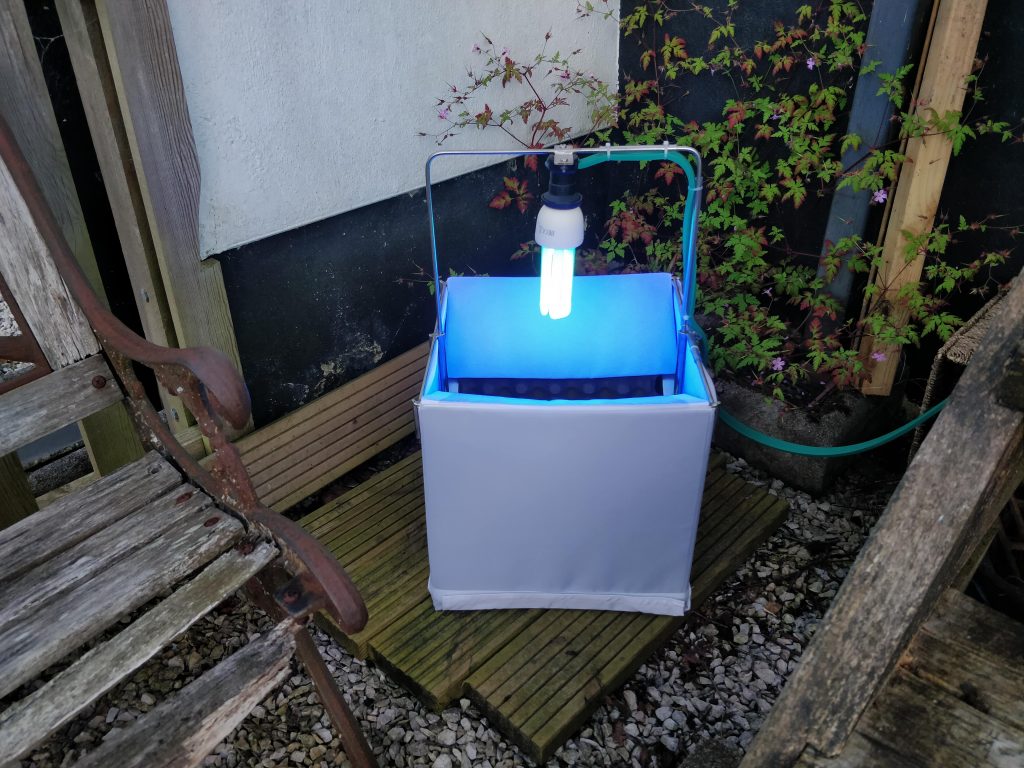
How we tested
I placed the trap in my small town centre garden for two nights in early July, checking first for favourable conditions (namely little to no chance of rain). Cloud cover can be good for moth catching, especially around a full moon. Moth species vary widely in their activity, some arriving at traps during dusk (such as crepuscular or day flyers) and some arriving well into the night. As such I put the trap out at around 9:30pm on both occasions while the day was fading and when the wind was low. I also made sure I wasn’t running the trap on two consecutive nights as I don’t have space to disperse trapped moths widely in the morning and I didn’t want to trap the same individuals two nights in a row. The trap was left on through the night in the corner of my garden, tucked out of view of my immediate neighbours, where it would also utilise the white walls of my house to maximise the light and landing space.
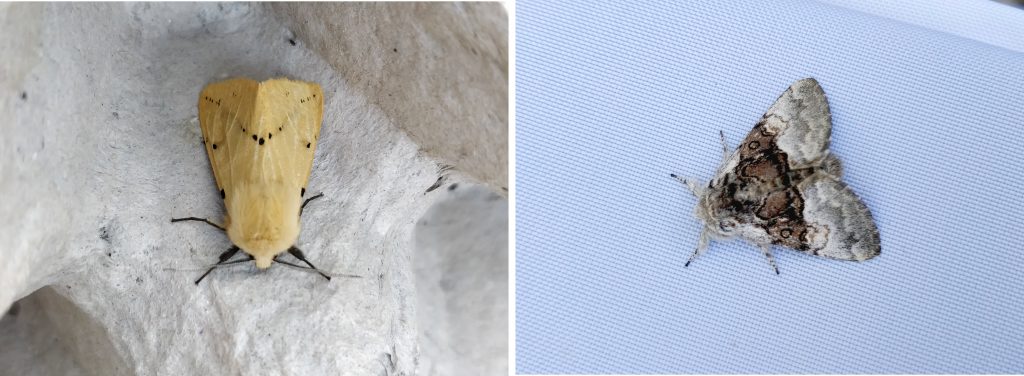
What we found
On both nights I found lots of moths inside the trap, as well as some specimens resting on the outside walls due to the white nylon coating; they remained there quite peacefully to ID. I also found that it was worth looking around the trap in the morning, as many species are attracted by the light and will land on nearby walls and foliage. The catch and retention rate seemed good for the conditions and I found this trap simple to run and fun to explore in the morning! The species found are listed below.
Species recorded
Nut-tree Tussock (Colocasia coryli)
Riband Wave (Idaea aversata)
Heart and Dart (Agrotis exclamationis)
Scorched Carpet (Ligdia adustata)
Marbled Minor (Oligia strigilis)
Buff Ermine (Spilosoma lutea)
Triple-spotted Clay (Xestia ditrapezium)
Grass Veneer (Chrysoteuchia culmella)
Common Plume (Emmelina monodactyla)
Uncertain (actual name – not me being unsure! – Hoplodrina octogenaria)
Bee Moth (Aphomia sociella)
Mottled Rustic (Caradrina morpheus)
Dwarf Cream Wave (Idaea fuscovenosa)
Eudonia lacustrata
Scoparia Sp.
Caddis fly Sp.
Summer Chafer Beetle (Amphimallon solstitiale)
Our opinion
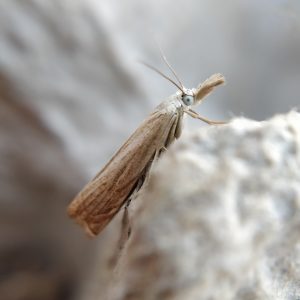
The NHBS moth trap is both lightweight and sturdy and is a breeze to set up. Simply attach the base to the walls of the trap using the Velcro strips, ensuring all of the velcro fixings are on the outside of the trap. Put some empty egg boxes inside the trap to give visiting moths some good nooks to safely rest in once inside (though some will just hang on the walls). Then slot the metal frames onto the lid of the box and rest the funnel slopes on them. The electrics slot into corresponding holes on either side of the metal frame. When disassembling the trap, always check around the framework for any hidden moths.
This is a great trap: competitively priced, bright, compact and neat and comes with a handy carry bag. It’s a perfect starting place if you’re just embarking on moth trapping for the first time and also great if you are travelling or plan to try trapping in a few places, as it really does pack down nicely.
The NHBS Moth Trap is available through the NHBS website.
To view our full range of moth traps, visit www.nhbs.com. If you have any questions on moth trapping or would like some advice on the trap for you then please contact us via email at customer.services@nhbs.com or phone on 01803 865913.







